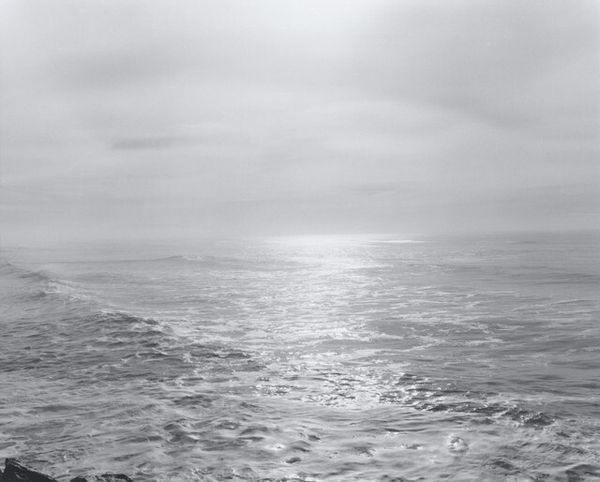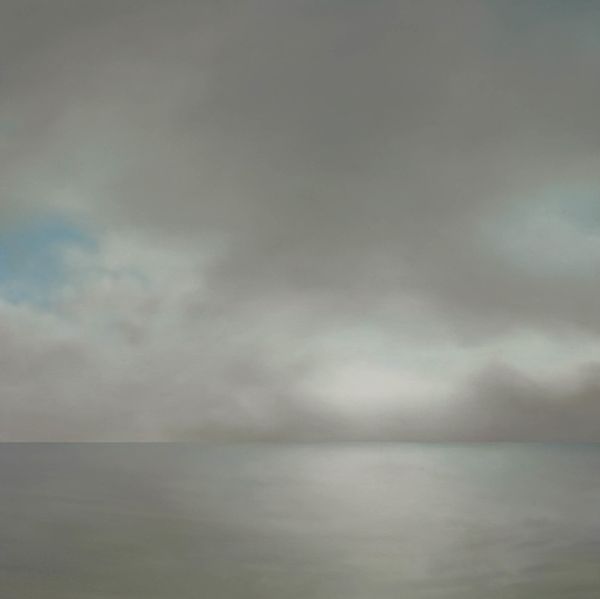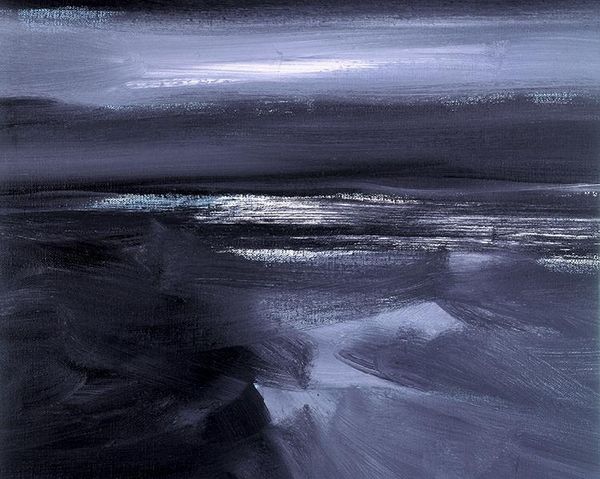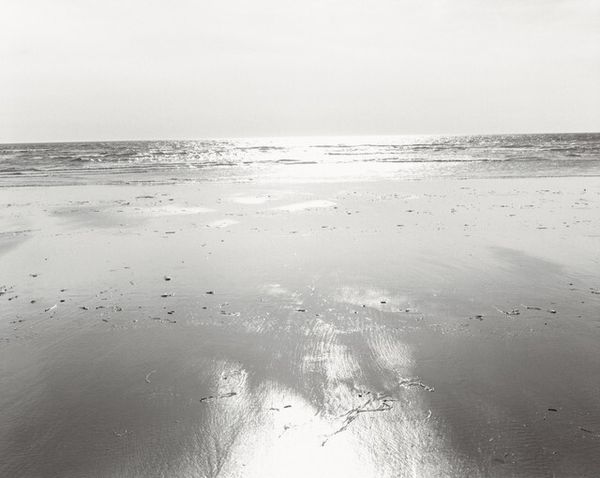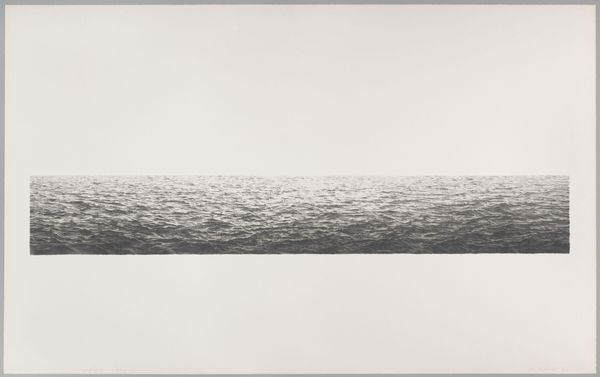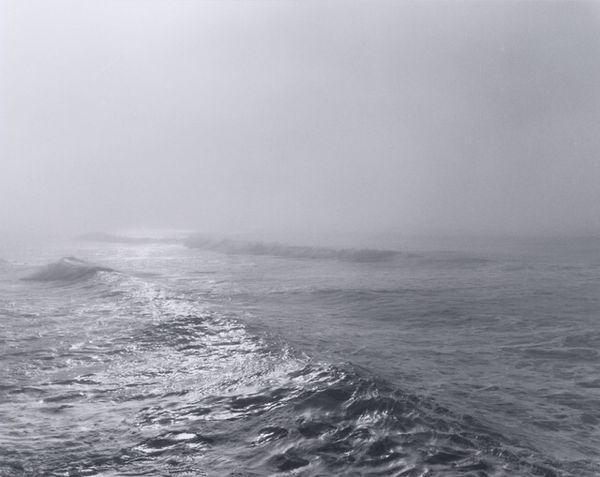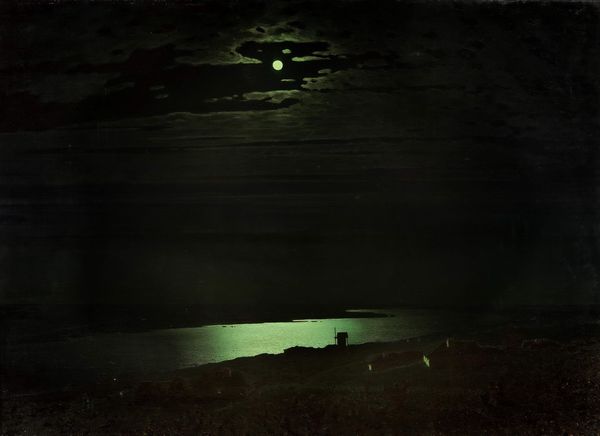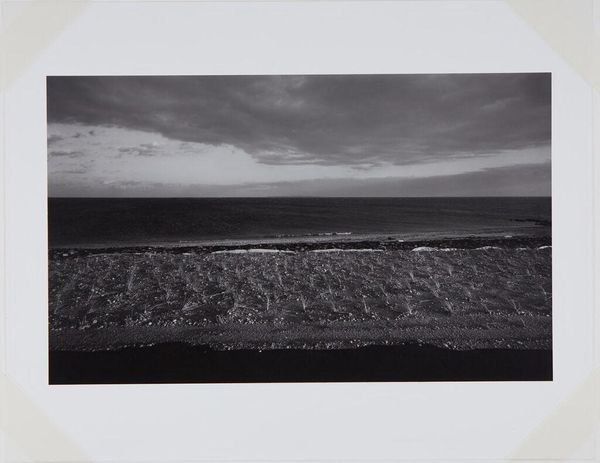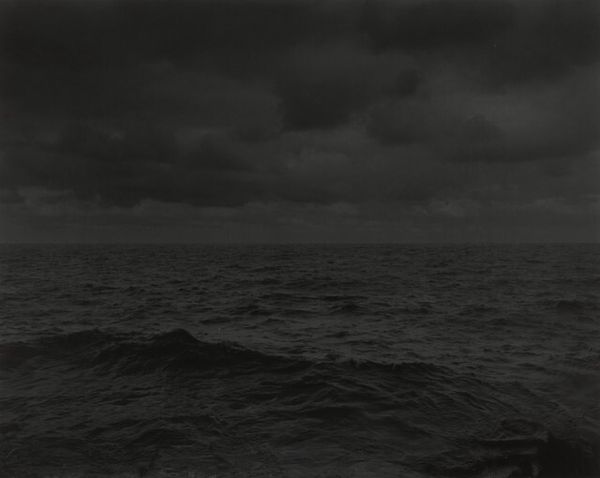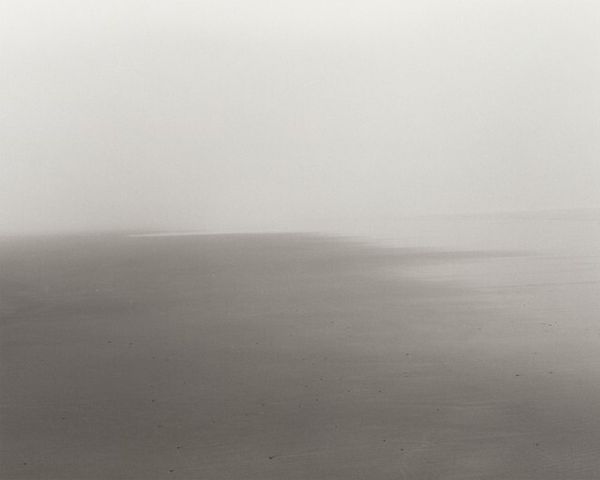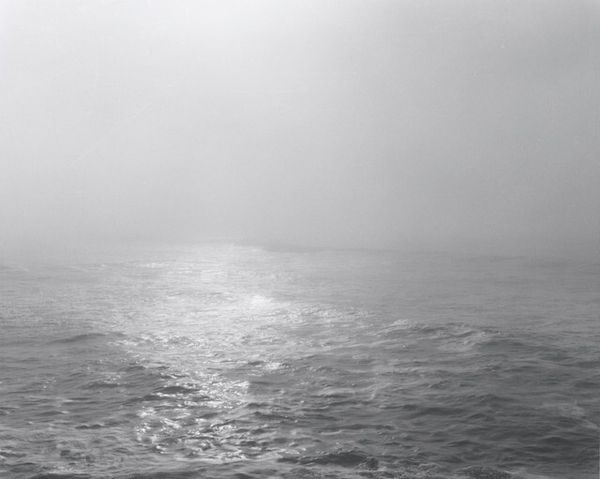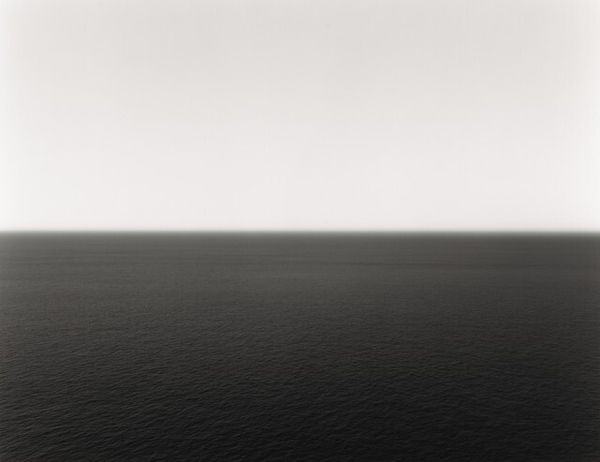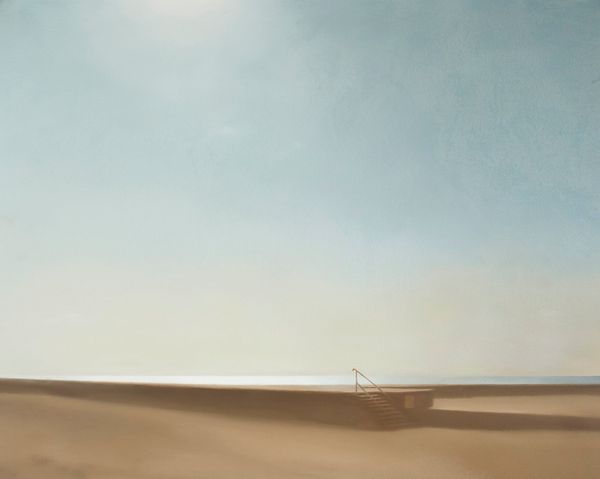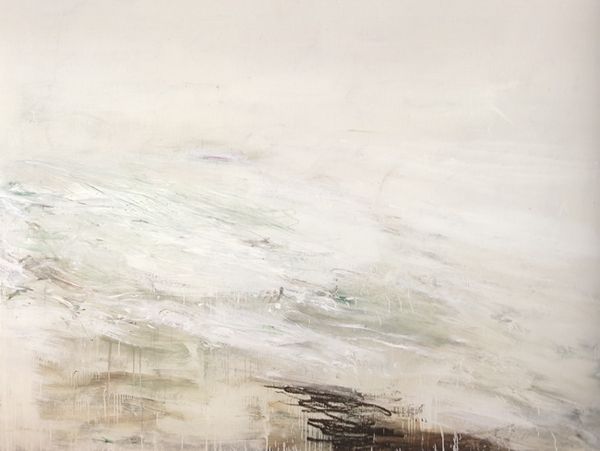
Dimensions: image: 750 x 1120 mm
Copyright: © Julian Opie | CC-BY-NC-ND 4.0 DEED, Photo: Tate
Curator: Julian Opie’s "Rain Voices Surf" at the Tate offers a striking vision. Editor: It’s so somber; the flat planes of color give it an almost ominous, mythical feel. Curator: Right, and considering Opie's engagement with mass production, the simplification here is key. It transforms something natural into a more accessible image through minimalist forms. Editor: Definitely. The image is drained of detail, yet it evokes something primal, like a collective memory of storms, or a sea deity. Curator: The choice of materials certainly plays a role in this effect, flattening the landscape to almost resemble a digital graphic. Editor: Perhaps, but I see the birds as lingering symbols of hope, a familiar motif against the sublime, indifferent forces of nature. Curator: An interesting perspective. I am fascinated by how the artist is reshaping our perception of the natural world through industrial processes. Editor: Well, it’s clear the artist uses visual shorthand to remind us of nature’s enduring power, however we manufacture its image.
Comments
Join the conversation
Join millions of artists and users on Artera today and experience the ultimate creative platform.
tate 6 months ago
⋮
Eight Landscapes is a series of eight digital colour prints on photographic paper mounted on perspex. It was made in an edition of forty, of which this is number thirteen. The prints have been framed in thin metal frames finished in white paint and glazed with perspex. All the images in the series also exist as individual works in larger format c-type prints resembling light-boxes, which are mounted either with sound systems (playing the sounds described by the title) or digital LED panels displaying the words of the title one by one. Two of the images, Distant Music Water Traffic and Rain Footsteps Siren, have been made in an additional version with flashing lights. The images portrayed in Eight Landscapes were created from photographs taken by the artist in a range of urban and natural environments. Opie scanned the photographs onto a computer and altered them digitally. His alterations involve emptying the images of detail by blocking in areas of flat colour. This results in generalised images of landscapes. The image titles are simple lists of three sounds Opie heard at the time he took the photograph. He has explained: 'Things in my experience don't look photographic. When I recall the things I did in a day, for example, it's not as a series of photographs, high resolution pictures. It's a series of images which resemble symbols and signs. It's like another language.' (Quoted in Julian Opie, 2001, p.6.) Much of Opie's work of the late 1990s simulates the symbolic landscape of computer games and children's picture books, encouraging the viewer to journey into a simultaneously familiar yet alien world. A group of six screenprints made in 1998-9 (Tate P78310-5) comprises a range of signpost-like images depicting city, country, open road, cars and a pop star. Opie derives his images from his immediate personal experience but depersonalises them in order to offer the viewer a commodity, that of being able to make his or her own individual imaginative journey. This process of commodification is overtly referred to in Opie's most recent work in which both sculptures and prints have multiple versions and possibilities for combination. One of his recent catalogues, published by the Lisson Gallery, London in 2001, takes the form of a mail-order catalogue illustrating and listing variable formats and prices for a range of sculptures and prints. The Eight Landscapes, listed with all their versions in this catalogue, represent an important departure from the earlier work both in their increased detail and in their reference to sound. Like such works as Richard Long's Sound Circle 1990 (Tate T06471), in which sounds are listed to convey the artist's experience in a landscape side by side with a visual representation of it (in this instance a map), Opie's Eight Landscapes bring together two kinds of language, one visual and one verbal. Both depend on the viewer's personal memories and resonances to enrich the experience of the work. Opie has said: 'what I would really like to do is make a painting and then walk into it' (quoted in Julian Opie 1997, p.52), suggesting that the processes of his work have an idealising or utopic function. He has also stated: 'I think my work is about trying to be happy … I want the world to seem like the kind of place you'd want to escape into … Mundane things are just as exciting as all the things you might imagine escaping into.' (Quoted in Julian Opie 2001, pp.4-8.) Further reading:Julian Opie, exhibition catalogue, Ikon Gallery, Birmingham 2001Julian Opie: Sculptures Films Paintings, exhibition catalogue, Lisson Gallery, London 2001, reproduced (colour) p.43Julian Opie, exhibition catalogue, British Council and Lisson Gallery London 1997 Elizabeth ManchesterFebruary 2002
